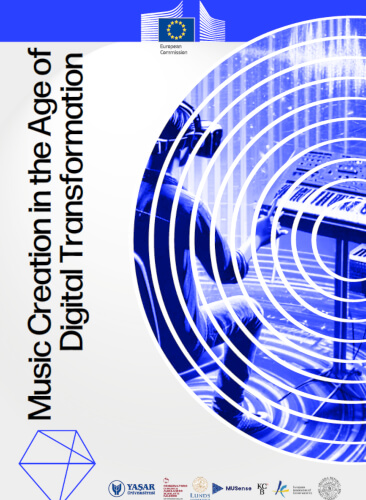Music Creation in the Age of Digital Transformation Handbook (PR3)

The Musense project is a forward-looking endeavour dedicated to the consideration and the answering of some of the most basic educational needs required by the new reality that presents itself to a new generation of students. It is the view of the project that raising the awareness of and informing students to some of fundamental aspects of this new reality can facilitate their musical and educational futures. To this end the project has created a course module and schedule that addresses these requirements. This course module is presented in the handbook above, in great detail.
The course module consists of a fourteen-week course that covers the most essential materials of four main areas of concern. The first – Digitalization - deals with the meaning of cyberspace and artificial intelligence. It demonstrates how we are informed and reshaped by them as well as what we can do to thrive in this new environment. The second – Creative Destruction and New Opportunities - describes how digitalization has affected the world of music and introduced the entirely new concepts of the cyber stage and cyber performance. The third area - AI Tools - is perhaps the most music- specific as it covers the present state of the creative industries, presents music-specific design thinking and provides a detailed breakdown of AI tools that can be used for all stages of music creation and production. The fourth and final part – AI Ethical Issues - explores the fundamental elements of human ethics and how these relate to the use of artificial intelligence in creation of any original content, be it musical or scholarly. The fourteenth period is designed to have an open discussion about any of the contents presented as well as an opportunity to receive feedback for the improvement in any facets of the course.
The course may be best described as a survey in that each of the four areas covered can be expanded to full length courses in themselves. The course presents the materials in a concise yet sufficiently detailed manner that enables the recipient to easily incorporate the content in theoretical and practical applications.
All the lessons are fully described by their own content, set of aims, and outcomes. The reason for presenting it in this manner is to provide comprehensive details that are usually not available in a general course description. This guarantees the accuracy and sequencing of the progression of both the course as a whole as well as its individual components.
The materials that are used in each lesson are also briefly annotated so that one may have a summarized content of every item at a glance. This is useful to anyone who might want to adopt this course without having to spend much time wading through the multitude of printed, video, and application materials. This format also allows for the fact that the weekly lesson schedule provided does not have to be overwhelming in detail and lengthy as a short-hand document. The modular weekly schedule is designed to be as detailed as necessary to fulfil as many internationally- established academic requirements as possible. It does, however, maintain a high level of elasticity so that it may be used in accordance to individual institutional requirements. Unnecessary portions may be discarded and substituted with locally-required portions. The accounting of the lesson time and ECTS are left balance so that individual institutions may adapt it as desired.
As there are a number of survey platforms, each institute may use a platform of its own choosing. Nevertheless, a simple template is provided to suggest both areas to be covered as well as the most relevant sample questions normally asked by course evaluation surveys. This too is not a set document but rather a guideline. It may be amended in any way seen fit.

